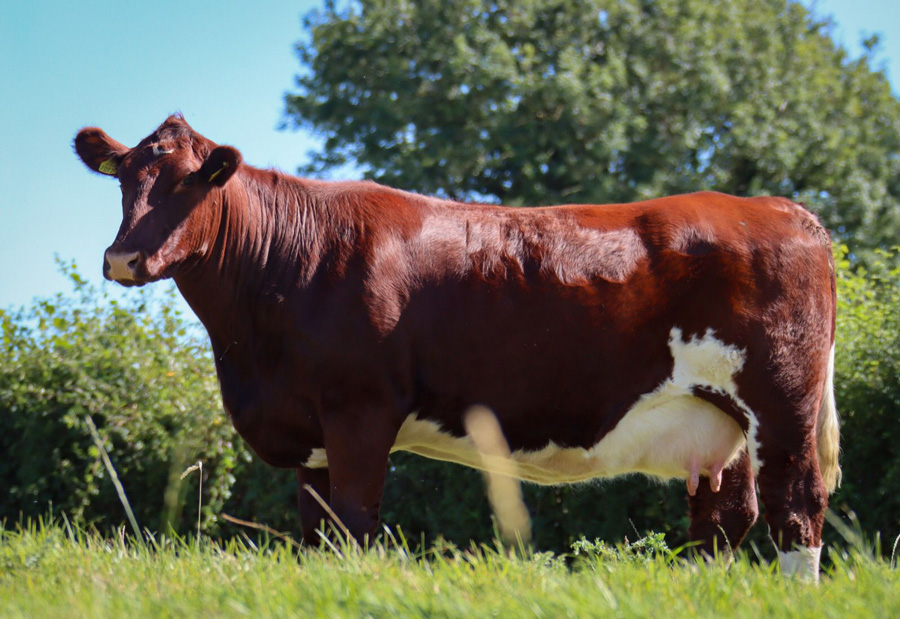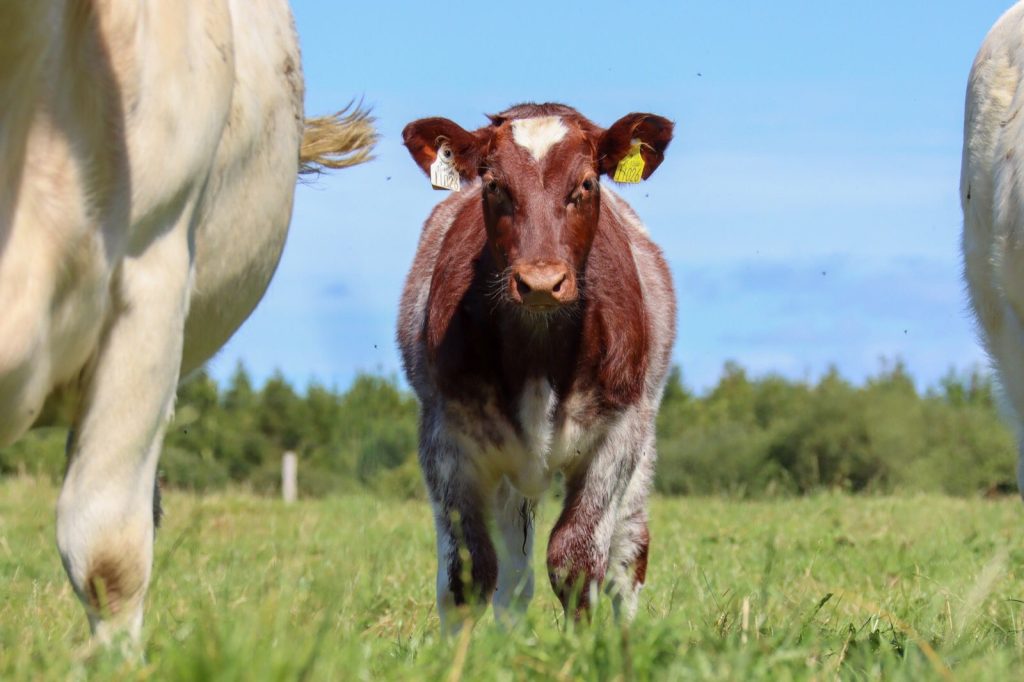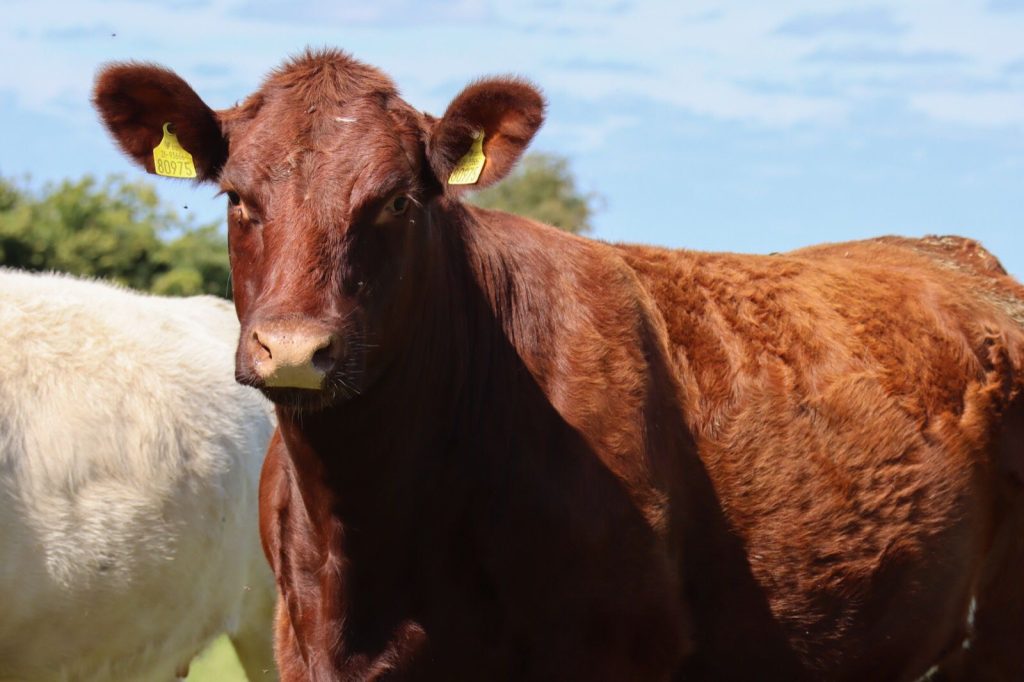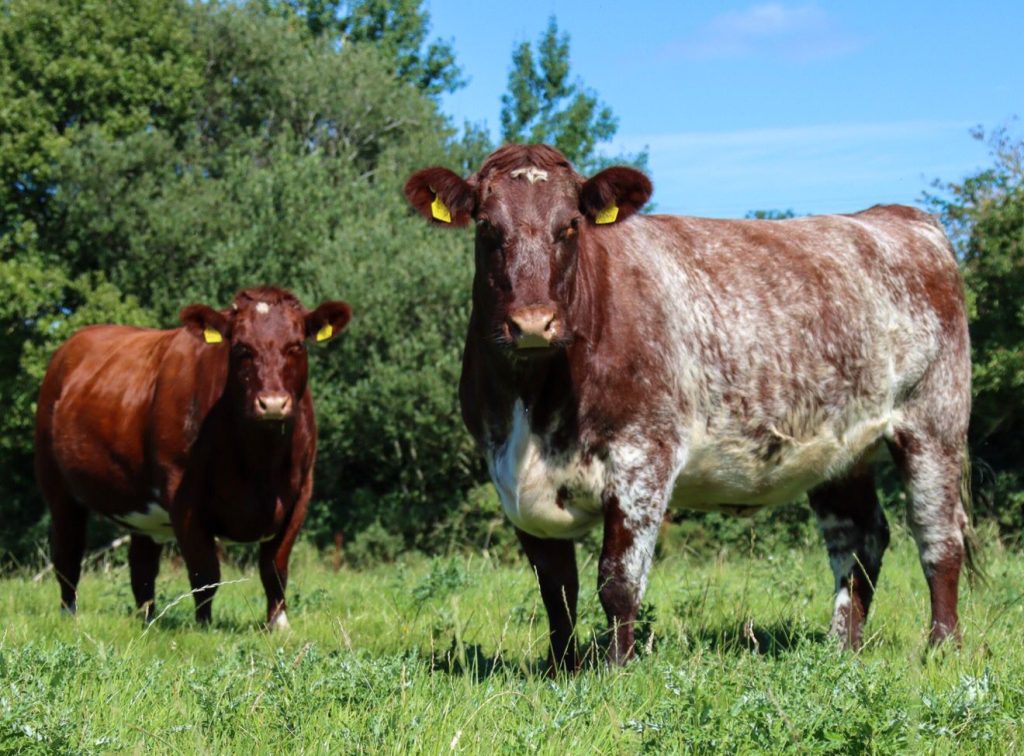In 1839 the Count de Fallous, a landowner, imported Durham cattle from England and crossed them with the Mancelle. The cross was extremely successful, and by 1850 Durham-Mancelle animals were winning championships at the French agricultural fairs.
In 1908 the Society of Durham-Manchelle Breeders was formed at Chateau-Gontier in the Mayenne district. In 1909 the name was changed to the Society of Maine-Anjou Cattle Breeders, taking the name from the Maine and Anjou river valleys.
The society has worked steadily for the improvement of the breed. Breeders of the cattle were mostly small farmers whose goal was to maximise income from their small area of land. For this reason, the Maine-Anjou evolved as a dual purpose breed, with the cows used for milk production and the bull calves fed for market. It is still common on many farms to find Maine-Anjou being milked. In many herds, half the cows are milked and the other half raise two calves each.
The Maine-Anjou is one of the larger breeds developed in France, with mature bulls weighing from 2,200 to 3,100 lbs. on the average. Mature cows will range from 1,500 to 1,900 lbs. The colouring is a very dark red with white markings on the head, belly, rear legs and tail. White on other parts of the body is also common.
It is very important to point out the similarities in origin that both breeds have, (namely the Durham cattle) and also the role of the Maine-Anjou breed in what is now known as the Beef Shorthorn. It is also important to point out that this infusion of outside blood has greatly improved the muscling, and beefing abilities of the modern beef shorthorn.



